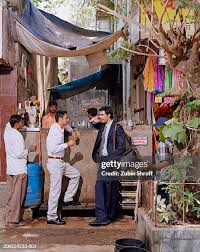Even today, cinema is an alluring phenomenon, that takes audience into another world of fantasy. For the reason, depicting the fancy with sheeny glamour, it has been termed as “silver screen.” Every era,

have had its own glamour and grandeur. But, there was an old era of cinema and releasing of movies into cinema hall. That, too with “single screen”, in itself, was like a celebration of some festivity. Here, I am taking you back into the era, that, existed from the sixth decade down to the eight decade of the 20th century. The movie’ theaters of that time, generally, had a vast capacity to receive the audience . This capacity, might range from eight hundred to more than thousand seats.
Often every hall contained, a special category of “balcony class,” that, was the super class. Such privileged class, often installed on first floor, just above the ground floor seats in the back portion of the hall. At that time, too, prevailed the tickets’ categories, as that of, we found in Railway coaches. For passenger class, were the third class or the lower stall. Then, second class and after that, first class and super class of “balcony.” This “balcony” class, you may equal to the “A C coach of the train”, though, no air conditioning system had been introduced, up to that time in general.
Artistic names of Cine halls

Interestingly, the names of cinema halls, were too classic. These names, sounded somewhat literary in intonation like Odeon, Orient cinema, Minerva, Bharat cinema hall, Filmistan, Chini Theatre etc. To day’s rising generation, that, curls the lip and disapprove on the name of single screen cinema hall forget one worth noticeable fact. That fact is, a good number of parents, who brought them into this world, their premarital love story too were shaped up in these old cinema halls. And the same relationship, helped them come into this world, as a by product.
At that period of time, the prestige of a city in the eyes of public, in general, was counted not on the basis of the presence of monumental buildings or places of heritage of architectural value in the city. But, on the count of how many cinema halls, such a city owns, to provide the entertainment to the public at large. Indubitably the architect and capacity to hold the audience too played significant role in this, to enhance the esteem and status of the city. Every cinema hall wore a significance equal to monumental building. An amazing ambiance, enveloped the cinema hall campus, made people feel its glittering impression.
Facilities around the old time’s cine hall’s campus
Every such cinema hall have had a separate vast place, secured for “bicycle stand.” Apart fro that, a specific area for “canteen facilities” to serve tea and snacks in interval of the movie. For this purpose, cinema hall’s proprietor assigned the contract of such canteen and bicycle stand, to his own trusted people. Such assigned trusted people were supposed to be harnessed with muscle power. And, these macho men cum hooligans, played a vital role in handling any awkward situation. They adroitly handled the situations, that, might occur as the negative side of the show business. In the present era “bouncers” play the same role.

The “door keeper” (who now given the name of janitor in the multiplex hall), who checked the billets for entrance, had his own importance and he even maintained his “swag”. For, such door keeper, too, had had his some liability, as being the member of the muscle men team. In that period, people mostly relied on cinema for entertainment, and for cine music, people had to take the support of radio or transistor. The film tickets of popular heroes and heroines, were often sold in black (marketing).
Involvement of cine’s hall staffer in black marketing – Generally, in this fishy and foggy business, the door keepers of the concerned class had to be involved. There happened to exist a “syndicate,” in this black marketing of tickets. This syndicate, used to run its business, with an involvement of all. That meant, from the hall manager, down to the bicycle stand, canteen contractor, door keepers, waiters of canteen, even kiosk owners who vend the smoking goods and snacks, inside the campus had their nexus. Such a big craze of movies was, so that, often cinema hall’s staff personnel used to earn enough money by black marketing of tickets. In general, this ‘off the record black earning’, crossed the salary of the month of the cine hall’s staffers.
Apart from them, there too existed an another category of hooligans in this black marketing business, they were the free lancers type. They, often visited the cinema hall rather inroad the campus from beyond the cinema hall site. Often , such youth had had stout physique and skilled in rowdy fighting. Firstly, they happened to create a rowdy scene in the queue of people, waiting for ticket purchasing. By dint of force, they would create a scene, that turn up into big fight. This helped disrupt the queue of peaceful people, waiting in the line. By taking advantage of this disorder,they would succeed in purchasing tickets in bulk, which they sell in black marketing .
This demeanor was common to shape up in to a disorderly skirmish, between cinema hall’s muscle men and them, and, often turned up into a bloody fight. The use of hockey sticks, dagger and bicycle’s chain, as a tool of fighting, was common. Such bloody skirmishes, sometimes, resulted in fatal injuries and rarely some injured hooligan succumbed to death. Such skirmishes resulting into murder, too, was taken as a token that particular cinema hall owner was adept in bringing hit movies to his hall . And, this subsequently worked as a feather in the hat of the cinema hall.
Artistic approach
Every cinema hall was bound to maintain staff of some skilled painters. This artistic staff, prepared the enlarged posters and hoardings of running show as well as of the next coming movies in advance. For the coming movie’s posters they prepared that, after, procuring the “sample posters” from the distributors. Such posters, usually, hung on the flash point of the cinema hall and at various hoardings points of the city. This helped raising the curiosity in cinema goers regard the upcoming events. Some painters had a renown of their skill, so that, even students of ” arts and paintings faculty” of degree collages of the city used to visit them. The visiting students, learn technique of ‘ color mixing and accessorial applications.” These students visited cine hall’s painters, upon the recommendation of their professors.
Although, the liability to maintain the law and order in the hall was chiefly of the district police administration. But, as mentioned earlier, how cinema hall’s proprietor, indirectly managed that by shifting the burden upon his private army. Apart from this, as it has ever been a common phenomena that students are fond of movies, and for the purpose, they bunked the school classes. At that time, principal Sir of school, took it their personal liability to restrict this bad habit in students. To check this habit, such principal Sirs of various schools and collages, often made the surprise raid, in between the running show, of the cine hall. Generally, students were caught because of the “dress code” of their school uniform.
The scenes of chastisement by principal Sir and staff on the spot, was very common and a good source of entertainment for public, for they too appreciated such raids. A specific mention of girls’ students, bunking the classes from the college, is needed here. They, too were kept under inspection, through such raids. Bunked girls, ever watched movie under a fearful air, since, apprehension of raid hovered over them too. Sometimes, funny situations created in the hall, when on purpose, some mischievous audience from the back seats of such girls student, gave a fake alarm, ” the raid of principal mam of government girls’ college has occurred in the hall.” It was hilarious to watch such bunked girls students, trying to hide them underneath the seat.
Up to this point, description majorly given is about the cinema halls and its culture of that era. Afterwards, with the introduction of multi screen cine halls began to replace the old halls. A description of the contents of the cine story needed, of both the old era as well as of the present era.’ It was not that B and C grade movies did not had their presence at that time. But a golden period of “art movies” or “parallel cinema” was witnessed by that era. That era, still remembered with an anguish by the old time cinema goers, for their meaningful and message oriented contents. But with the advent of big budget commercial movies that specific category went into oblivion.
Old movies’ contents and melodies
The significant characteristics of that time movies were, they could be categorized as “family movie.” Meant, you could visit the cine hall, to watch the movie along with your family members. And, never put to any awkward situation, before family members by any vulgar scene. You never had any fear to steal the glance from the family members. Secondly, every such movie had had a phenomenal characteristic of sending some healthy social message to the society.
At that time, the character of a bad man or villain was never glamorized. Whilst, with the inception of the modern cinema, the fashion of glamorization of villain or bad man is in trend. We are forced to experience the magnanimity of the under world, in visuals as part of the contents. In the last decade of the last century, a good number of movies, whose contents focused upon the glamorization of the “Underworld,” motivated so badly to youngsters. In an unofficial admission, top officials of Bombay police revealed, aft,er the release of a super hit movie based upon the glamorization of the Underworld; the tendency of inclination towards the underworld, in the youth rose to a dramatic percentile.
There was an old era of movies in the decades of 1960 to 1980, that, witnessed and registered its immortal presence as the “golden era of melodious music” based upon Indian ragas. Not to say of the taste of the present generation, even the generation of their parents enjoy the same categorical musical songs, by being engrossed deeply in them. Modern generation musical albums, hardly survive for few weeks and then thrown to the dust bin.
Not a single song, in the history of last twenty years of the modern cinema is worth mention, that, has attained the age of ten years of life span. Here, I can mention with proud that even on today, the hit numbers of songs of the decade of 1960 of Hindi cinema are played and enjoyed widely in the colorful marriage events. It may be contended, ” every era has got its own trend,”right you are, but to become perpetual, something special is needed always. It’s a vital fact.
Premarital affairs of youth of bygone era
In that period of time, girls and boys in their premarital love affairs, happen to watch movies without coming into the notice of parents rather clandestinely. For that, they maintained a high degree of secrecy. On the contrast , to day’s scenario is just reverse. A parent or elder brother, when entering a cinema hall to watch the movie, always remain gripped into an apprehension, ” Oh God! what if , I found my daughter or sister in the hall with her boyfriend!!!” Today, youth inquires from friend before going to the cinema hall, ” Bro, how many hot scenes the movie contain?” And in old time cinema, our Indian heroes and heroines in romantic scene merely used to run after one another by maintaining a decorous distance without touching each other.
It,s all said a trend; but who helps to decide this trend? We are the people who run this trend and this is inclusive of all of our three living generations, from grandfather down to the grand son. Agree with you, today’s time is of social media, that, too helps create the trend, because everything is available there. But, in social media every person gets involved personally. He or she watches that content in privacy. The present modus operandi of cine culture, helps to attain a “mass consensus.” This mass consensus putting our adolescent generation into the peril of becoming victim of unripe “crush” and sexual exploitation.
Specifically, our young girls are badly influenced by this, who, are to become prospective wife and mother and raise the family with polluted mind set. The cine producers, directors and writers of the bygone era, were conscious of their social liability, and, used to make meaningful movies. On the contrary, today’s chief motto is business and marketing, may what come up, no one thinks of that. Despite all of this, keep your hope kindle on. That was the era of golden movies, this era is of vulgarity. That era too waned away, this era too will go in an oblivion……. Penned by– Vinay Pharasi.



